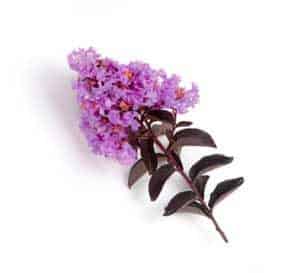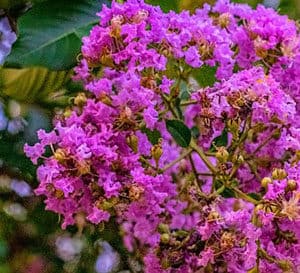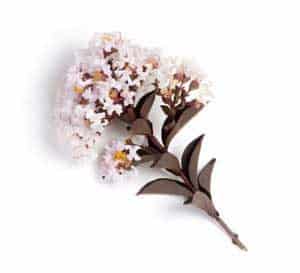By Kimberly Toscano
Whether you call them crepe myrtles or crape myrtles, these summer blooming plants are extremely adaptable and fast growing and are ideal for shaping into single- or multi-trunked trees. Pruning crapemyrtles into tree-forms accentuates plant architecture and highlights the showy, dappled bark. Compact, modern cultivars like those in the Delta Series make it easy to incorporate these stunning specimens into any sized landscape.
Selecting Your Style of Crapemyrtle
Delta Series Crapemyrtles can be grown in their natural form or trained into single- or multi-stemmed trees. Each style lends a unique aspect to the garden. Multi-stemmed plants yield an upright, vase-like profile reminiscent of old tree-sized specimens like ‘Natchez,’ but with scaled-down dimensions just right for today’s landscapes. Single trunk crapemyrtles have the formal air of a standard when young and develop shapely, rounded crowns with age.

Plant tree-form crapemyrtles singly for a captivating focal point or line them along a walkway in a stunning allée. Incorporate single- or multi-stemmed crapemyrtles around the patio, either in the ground or containers, to provide lasting structure and vibrant color.
Standard crapemyrtles look particularly elegant in containers. Use them to flank the front door for a sophisticated entryway. With a long bloom season, showy foliage, and dappled bark, Delta Series Crapemyrtles are sure to impress.
Pruning Multi-Stemmed Crapemyrtles

Shaping these flowering trees into multi-stemmed trees is surprisingly easy; here’s how to plan your pruning cuts. To create a multi-trunk form, select three to five of the most vigorous stems and remove all others at ground level. Develop a strong framework by selecting stems that are well spaced and growing at a slight angle away from one another. This will produce a lovely vase-shaped form.
Remove branches from the lowest one-third of each main trunk. Selectively prune upper branches along each stem to shape a flowing, open canopy. Remove branches that cross one another or grow through the interior of the crown. As the crapemyrtle grows, continue to remove lower branches and any suckers that emerge from the base of the plant.
Training Crapemyrtles to a Single Trunk Tree

Shaping a single-stemmed crapemyrtle requires a bit of patience in your pruning technique. Start with a young plant and identify which shoot to train into your trunk.
Look for a strong stem that is growing straight and upright. Then, remove all other shoots. It may be necessary to stake the trunk to keep it upright.
Next, remove branches from the lower portion of the stem, exposing one-third to one-half of the trunk. This process will need to be repeated as new branches emerge. Each winter, continue to shape the tree by removing branches so that the visible portion of the trunk accounts for one-third to one-half of the overall plant height.
Shape the dense growth of the canopy by thinning back to the strongest stems. Encourage even growth in all directions, and remove branches that grow across or through the canopy. Thin interior branches each winter as needed to maintain good light penetration.
When to Prune Crapemyrtles: Basic Tips

Crapemyrtles flower on new growth, so pruning during the growing season would remove new flower buds. The best time to prune crapemyrtles is during the dormant season, in late winter to early spring, before new growth emerges.
A well-trained crapemyrtle will not need much pruning, but it is a good idea to inspect plants for damaged, dead, and crossing or rubbing branches. Remove these to improve overall plant health and appearance. Also thin out interior branches as needed to maintain good light penetration, which will promote better flowering.
Watch for suckers emerging from the roots or along the lower portions of the main trunk(s). As needed, cut suckers back to the ground when they are young and tender. Finally, many cultivars respond well to deadheading throughout the summer. Simply cut off spend flowers to encourage a fresh flush of blooms.














